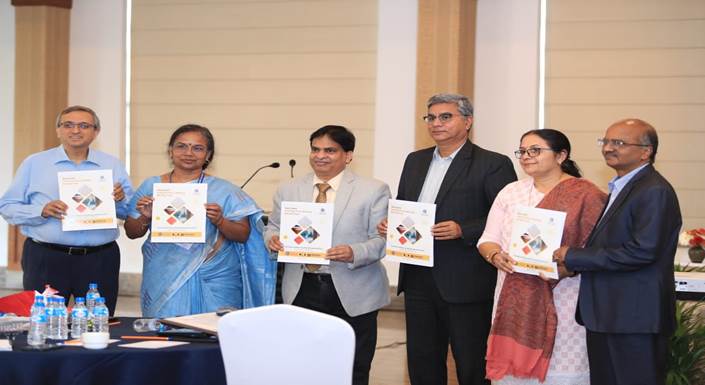Ministry of Science & Technology
Advanced Materials and Processes Research Institute (AMPRI), Bhopal Converts Red Mud into X-ray shielding tiles
The tiles can be used to build radiation shielding structures in diagnostic X-rays, CT scanner rooms, Cath labs, bone mineral density and dental X-rays
प्रविष्टि तिथि:
29 OCT 2022 7:36PM by PIB Delhi
CSIR- Advanced Materials and Processes Research Institute (AMPRI) has converted red mud into X-ray shielding tiles in a green and economically viable manner through a ceramic route by adding a certain weight percentage of high Z material and binder with it. The 12 mm thick tiles possess an attenuation equal to 2.1 mm lead at 100 kV. Moreover, the developed tile has a flexural strength of 34 N/mm2 and a breaking strength of 3369 N. These tiles can be used to build radiation shielding structures in diagnostic X-rays, CT scanner rooms, Cath labs, bone mineral density, dental X-rays, etc., instead of the toxic lead sheet to protect the public from radiation hazards.

Today, during the Directors’ conference held at Palampur, DG, CSIR and Secretary DSIR, Govt. of India, Dr N.Kalaiselvi has released the first flyer of the brochure detailing the success story of the topic, starting from fundamental, to applied, to commercialization to M/S Prism Johnson, and deployment of the technology.
The know-how for the fabrication of “Lead-Free X-ray Shielding Tiles” was transferred to M/S Prism Johnson Ltd., on 10/06/2019 at CSIR, New Delhi. CSIR-AMPRI and M/s Prism Johnson Ltd., have worked together and upscale this technology from the lab to the industry level, and joint-free X-ray shielding tiles (30x30x1.2 cm3) were made on a pilot scale on 14/04/2022. The developed tiles are tested and approved by the Atomic Energy Regulatory Board (AERB) of India. The product is commercialized and the first instalment has been initiated at INS Kattabomman, Tamilnadu.
Red Mud is the waste generated in the Bayer process of alumina production from bauxite. It is also known as bauxite residue. Red Mud is defined as a “High Volume Low Effect Waste”. Nearly 1 to 1.5 tonnes of RM is being generated while producing one tonne of alumina from the bauxite ore through the Bayer process. It is considered to be toxic due to its extreme alkalinity and heavy element leaching. Annually about 175 million tonnes of red mud have been generated globally and stored in a specially designed clay-lined pond. Among that India is producing nearly 9 million tonnes of red mud every year. The clay-lined ponds often broke out and pollute soil, groundwater, and air and become fatal for both humans and wildlife.
Red mud is one of the underutilized industrial wastes and getting accumulated over the years due to an increase in alumina production as well as inadequate technologies for its large-scale utilization. Although the scientific community has patented more than 700 applications of red mud, very few of them have reached industries due to high cost, low public acceptance, environmental issues, and limited market. Noteworthy, only 3-4% of red mud has been utilized by the industries to produce cement, bricks, source of iron ore etc., (i.e. 1-1.5 million tonnes (Mt) for cement production, 0.2–1.2 Mt for iron production and 0.5 -1.0 Mtfor building materials and 0.3 Mt for making pigments, catalyst, ceramics, etc.).The beneficial utilization of red mud is becoming a global issue. The red mud contains 30 – 55% of Fe2O3, which is suitable for attenuating high-energy ionizing radiations like X- and gamma rays.
<><><><><>
SNC/RR
(रिलीज़ आईडी: 1871866)
आगंतुक पटल : 2359